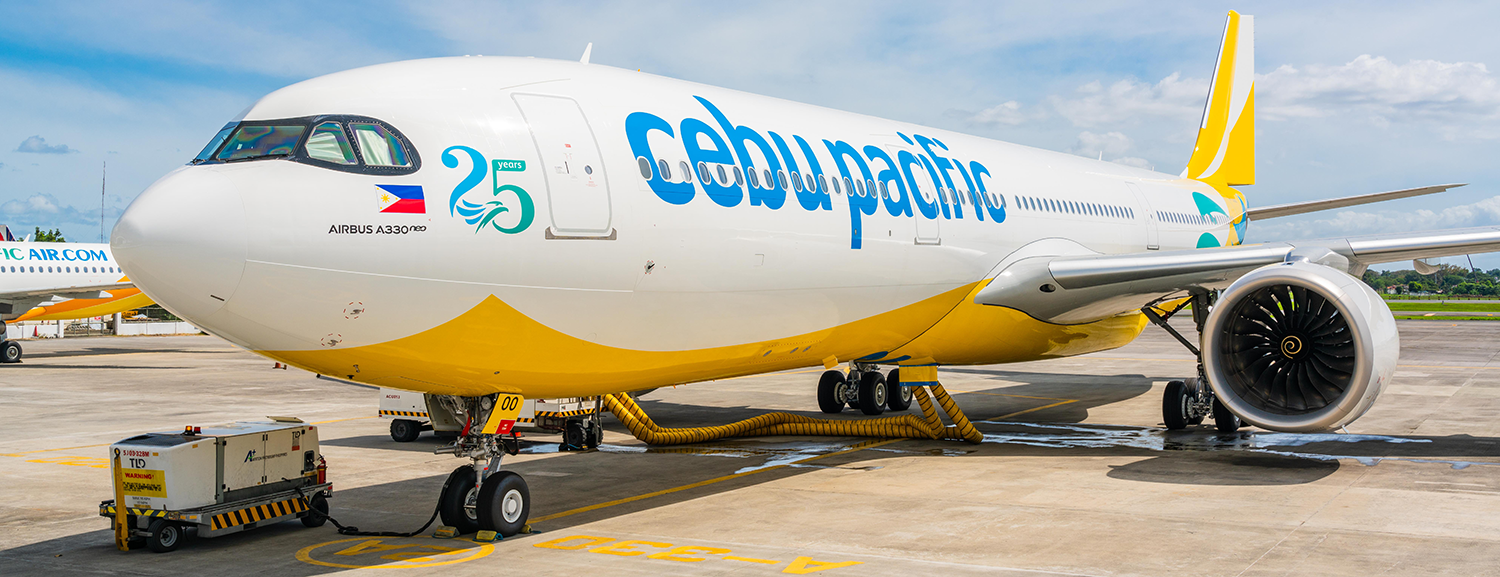Resilient Low-Fare Carrier Cebu Pacific Aims to Reemerge Even Stronger

As the Philippine domestic travel market booms and international travel returns, low-fare carrier Cebu Pacific is out to prove it can come back stronger than before.
LARA Editor Lucy Powell investigates.
Cebu Pacific has the undisputed honour of being the longest-serving low-fare airline in the Asia-Pacific region and for good reason.
The carrier, formed in 1996 and later remodelled into a low-fare format circa 2005, is based in the Philippines – a thriving archipelago whose very geography ensures it relies heavily upon air travel to keep its people connected.
What’s more, the Philippine labour diaspora (termed since the 1980s as bagong bayani or “modern-day heroes”) is one of the largest in the world, with estimates from 2021 putting its overseas workers at 9 to 10 million, around 10% of the country’s 100 million population.
It is this backdrop – the beautiful cluster of islands surrounded by azure seas with an ever-moving populace – that creates the perfectly advantageous location for a low-fare carrier like Cebu Pacific to thrive.
Mike Szucs, Chief Executive Officer of Cebu Pacific, says: “The low-fare model is absolutely the one to do in short-haul travel. So we’re just out to do it better than we did before [pre-Covid].”
At present, the low-fare carrier is steadily climbing back towards a 55% to 45% domestic-to-international split in terms of passenger carrying capacity (the carrier sat at around a 70% to 30% split of seats between markets during Covid). Yet, despite this shift, Cebu Pacific still relies heavily on its domestic market.
By the end of Q3, the low-fare carrier is expecting to control 60% of the domestic market share – by no means a monopoly, but still a sizeable chunk of the Filipino airline scene.
While short-haul routes prove the most profitable – there are four billion people within three hours’ flying distance of its hub in Manila, perfect for short routes – CEO Szucs is still keen to point out the airlines’ long-haul capabilities that primarily serve its so-called “modern-day heroes”.
“Long-haul LFCs are not a slam dunk,” he says. “We’re pragmatic about where we go, and the routes we’re on have very specific characteristics. For example, Manila to Dubai is an incredibly competitive route, but it’s such a big route that there’s room for everyone.”
Currently, Cebu Pacific covers 35 domestic destinations and 23 international ones, which include three long-haul routes to Dubai, Melbourne and Sydney.
Its hub airports in Manila, Cebu and Clark serve as an ideal connecting area for passengers looking to complete an onward journey through Southeast Asia. But if there are plans for route expansion any time soon, Szucs downplays their immediacy.
“We’d always look to add capacity to and up gauge our pre-existing routes,” he says, citing Dubai, Japan, and Bangkok as examples of where the airline has either increased its flight frequency or is looking at doing so.
“There will be some new routes, and I wouldn’t rule out the odd long-haul route in addition to what we’re doing now. But if I was to project down the line in five to six years’ time, you won’t see too many more long-haul routes.
“Will we have opened up short-haul and more domestic routes [in the future]? Yes. But only when we’ve added density onto the routes that we’ve already got. That’s a big part of our strategy.”
